Blockhouse on:
[Wikipedia]
[Google]
[Amazon]

 A blockhouse is a small
A blockhouse is a small
 Early blockhouses were designed solely to protect a particular area by the use of artillery, and they had accommodation only for the short-term use of the garrison. The first known example is the Cow Tower, Norwich, built in 1398, which was of brick and had three storeys with the upper storeys pierced for six guns each. The major period of construction was in the maritime defence programmes of
Early blockhouses were designed solely to protect a particular area by the use of artillery, and they had accommodation only for the short-term use of the garrison. The first known example is the Cow Tower, Norwich, built in 1398, which was of brick and had three storeys with the upper storeys pierced for six guns each. The major period of construction was in the maritime defence programmes of
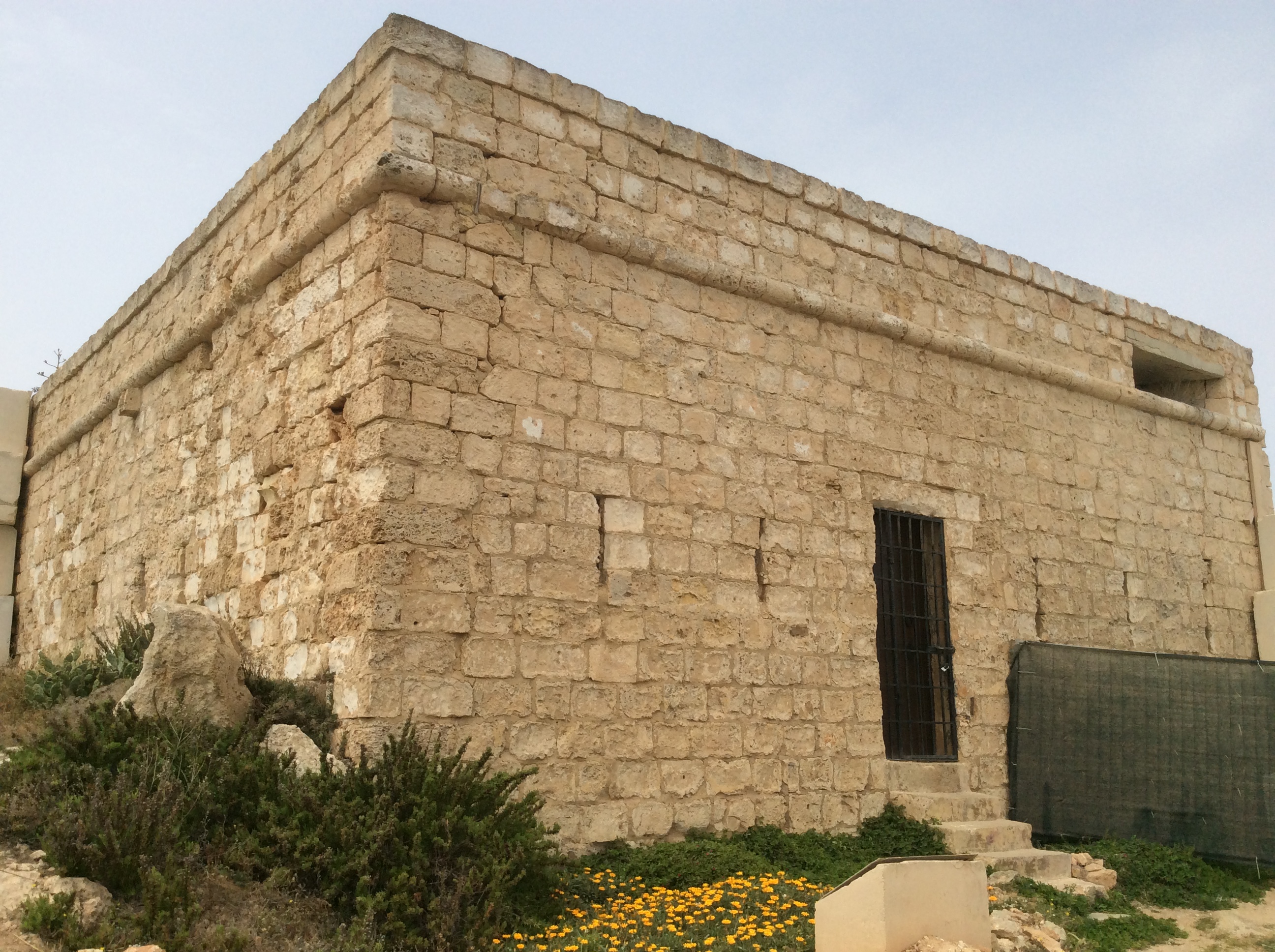 Blockhouses were an ubiquitous feature in
Blockhouses were an ubiquitous feature in
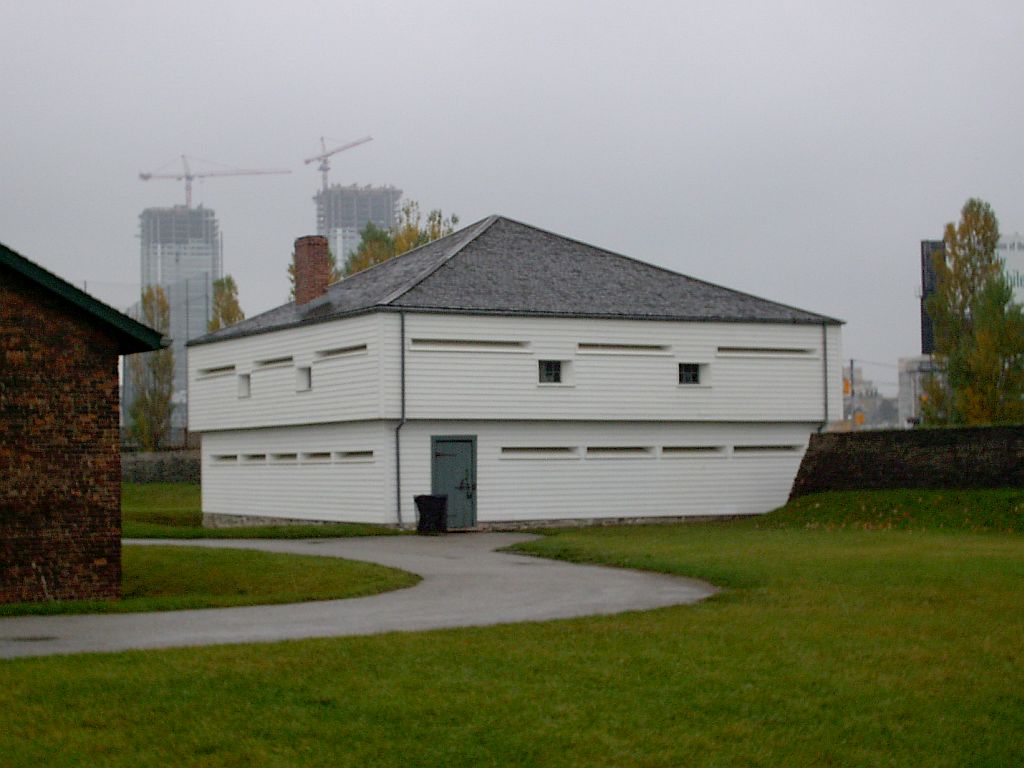 Blockhouses were normally entered via a sturdy, barred door at ground level. Most blockhouses were roughly square in
Blockhouses were normally entered via a sturdy, barred door at ground level. Most blockhouses were roughly square in
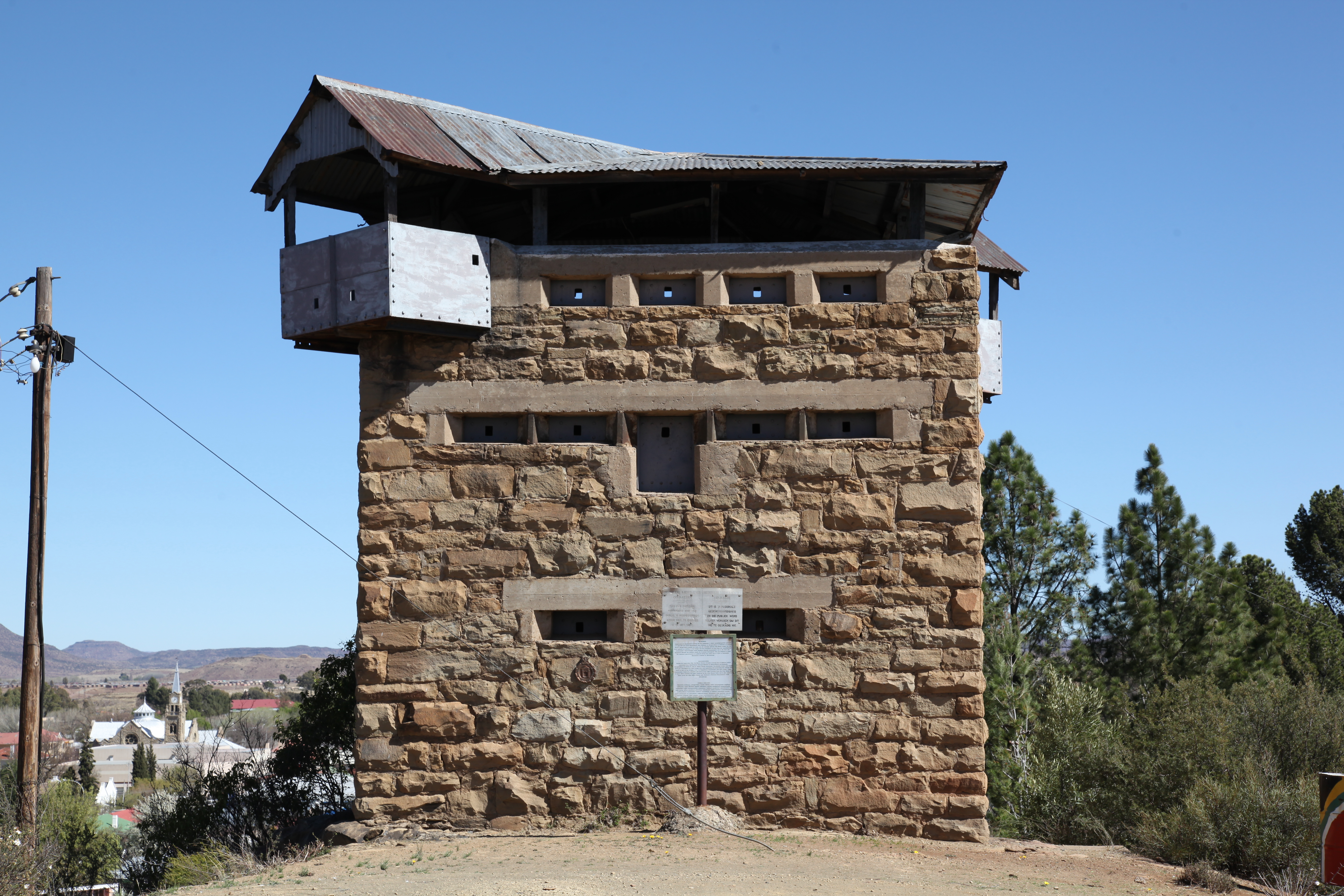 During the
During the  A circular design developed by Major Rice in February 1901 had good all round visibility, and the lack of corners did away with the need for a substructure. Failure due to wood rot and splintering when hit by bullets or shrapnel were eliminated. The steel door to the blockhouse was sheltered by another piece of corrugated iron. The Major Rice blockhouse could be erected in six hours by six trained men. With the change from square gabled roofs to a circular design, they were given the nickname "Pepperpot blockhouse". With mass production the cost to build a blockhouse dropped down to £16, compared to several hundred pounds for masonry ones.
These blockhouses played a vital role in the protection of the railway lines and bridges that were key to the British military supply lines.
A circular design developed by Major Rice in February 1901 had good all round visibility, and the lack of corners did away with the need for a substructure. Failure due to wood rot and splintering when hit by bullets or shrapnel were eliminated. The steel door to the blockhouse was sheltered by another piece of corrugated iron. The Major Rice blockhouse could be erected in six hours by six trained men. With the change from square gabled roofs to a circular design, they were given the nickname "Pepperpot blockhouse". With mass production the cost to build a blockhouse dropped down to £16, compared to several hundred pounds for masonry ones.
These blockhouses played a vital role in the protection of the railway lines and bridges that were key to the British military supply lines.
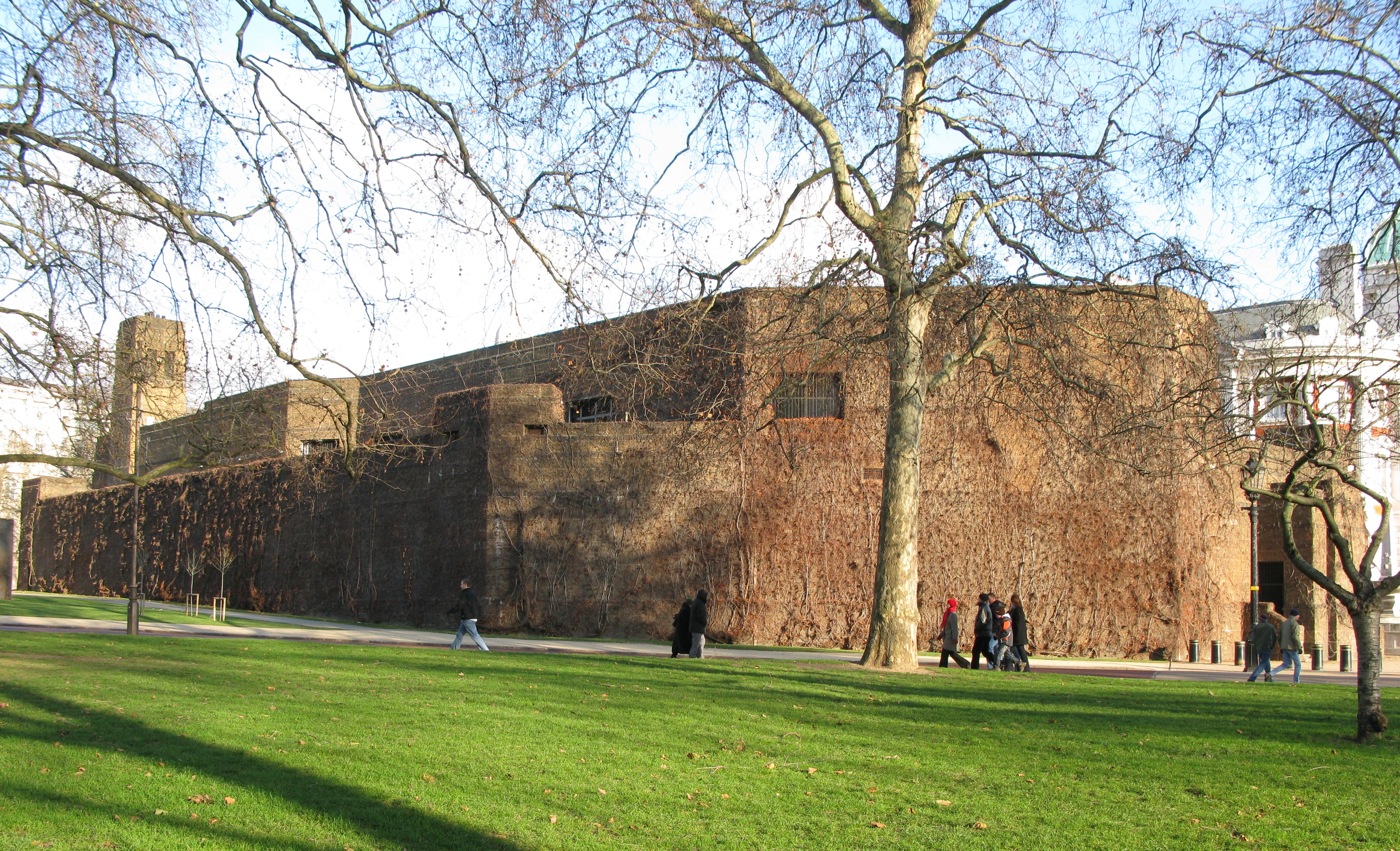 Some blockhouses like those constructed in England in 1940 were built in anticipation of a German invasion; they were often
Some blockhouses like those constructed in England in 1940 were built in anticipation of a German invasion; they were often 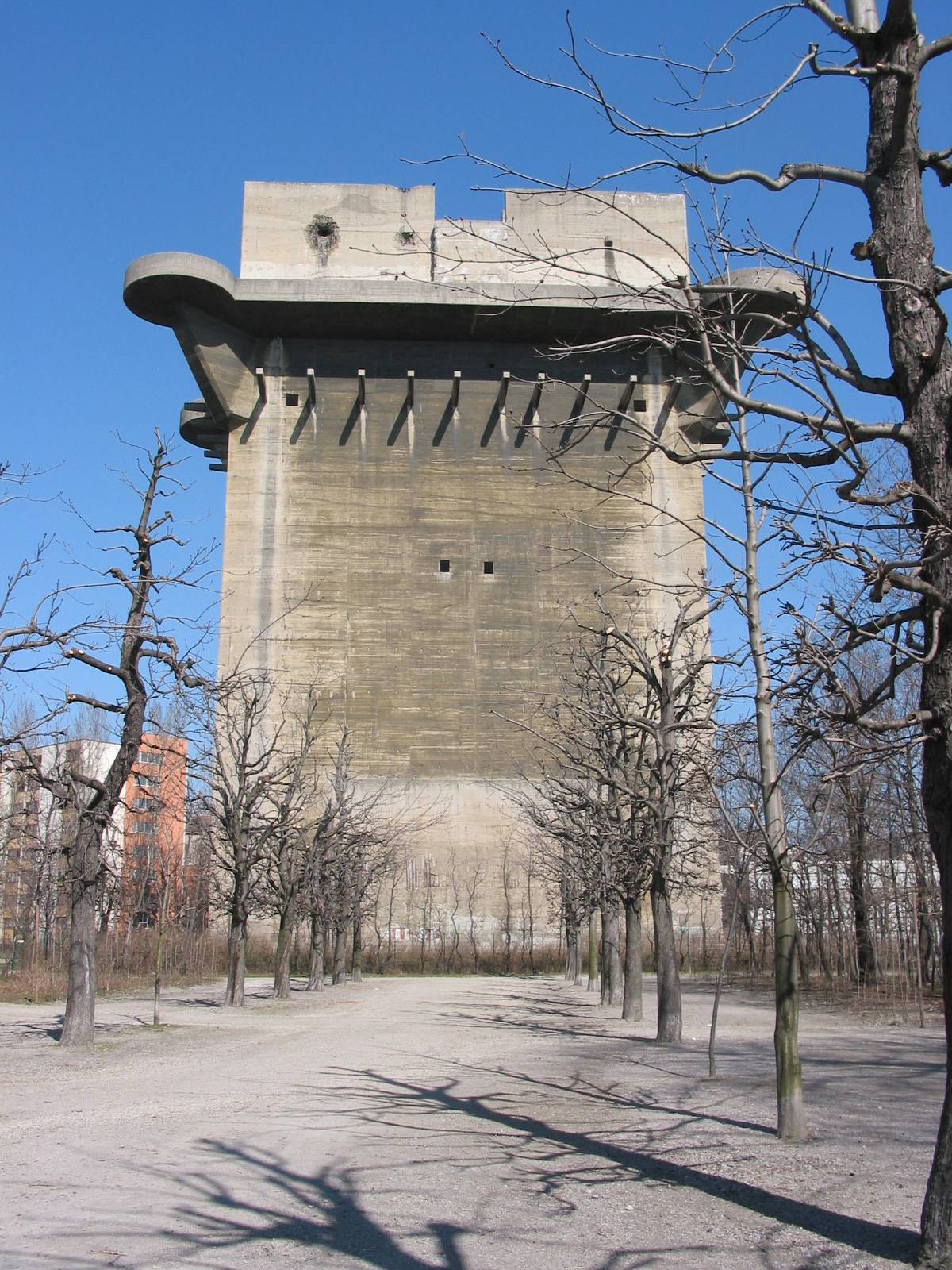 The Admiralty Citadel in London is one of the sturdiest above-ground structures built during World War II. It was constructed in 1940–1941 as a bomb-proof operations centre for the Admiralty, with foundations nine metres deep and a concrete roof six metres thick. It too was intended to serve as a strongpoint in defending against the feared invasion.
In Berlin and other cities during
The Admiralty Citadel in London is one of the sturdiest above-ground structures built during World War II. It was constructed in 1940–1941 as a bomb-proof operations centre for the Admiralty, with foundations nine metres deep and a concrete roof six metres thick. It too was intended to serve as a strongpoint in defending against the feared invasion.
In Berlin and other cities during
Pillbox Study Group
Blockhouses during the Anglo-Boer War (1899–1902)
British World War 2 Fortifications
The Fortress Study Group
{{Fortifications * Fortifications by type . Concrete buildings and structures Military science
 A blockhouse is a small
A blockhouse is a small fortification
A fortification (also called a fort, fortress, fastness, or stronghold) is a military construction designed for the defense of territories in warfare, and is used to establish rule in a region during peacetime. The term is derived from Lati ...
, usually consisting of one or more rooms with loopholes, allowing its defenders to fire in various directions. It is usually an isolated fort in the form of a single building, serving as a defensive strong point against any enemy that does not possess siege equipment or, in modern times, artillery
Artillery consists of ranged weapons that launch Ammunition, munitions far beyond the range and power of infantry firearms. Early artillery development focused on the ability to breach defensive walls and fortifications during sieges, and l ...
, air force
An air force in the broadest sense is the national military branch that primarily conducts aerial warfare. More specifically, it is the branch of a nation's armed services that is responsible for aerial warfare as distinct from an army aviati ...
or cruise missile
A cruise missile is an unmanned self-propelled guided missile that sustains flight through aerodynamic lift for most of its flight path. Cruise missiles are designed to deliver a large payload over long distances with high precision. Modern cru ...
s. A fortification intended to resist these weapons is more likely to qualify as a fortress
A fortification (also called a fort, fortress, fastness, or stronghold) is a military construction designed for the defense of territories in warfare, and is used to establish rule in a region during peacetime. The term is derived from L ...
or a redoubt
A redoubt (historically redout) is a Fortification, fort or fort system usually consisting of an enclosed defensive emplacement outside a larger fort, usually relying on Earthworks (engineering), earthworks, although some are constructed of ston ...
, or in modern times, be an underground bunker
A bunker is a defensive military fortification designed to protect people and valued materials from falling bombs, artillery, or other attacks. Bunkers are almost always underground, in contrast to blockhouses which are mostly above ground. T ...
. However, a blockhouse may also refer to a room within a larger fortification, usually a battery or redoubt.
Etymology
The term '' blockhouse'' is of uncertain origin, perhaps related toMiddle Dutch
Middle Dutch is a collective name for a number of closely related West Germanic dialects whose ancestor was Old Dutch. It was spoken and written between 1150 and 1500. Until the advent of Modern Dutch after 1500 or , there was no overarching sta ...
'' blokhus'' and 18th-century French '' blocus'' (blockade).
In ancient Greece
Blockhouses existed in ancient Greece, for example the one nearMycenae
Mycenae ( ; ; or , ''Mykē̂nai'' or ''Mykḗnē'') is an archaeological site near Mykines, Greece, Mykines in Argolis, north-eastern Peloponnese, Greece. It is located about south-west of Athens; north of Argos, Peloponnese, Argos; and sou ...
.
Early blockhouses in England
 Early blockhouses were designed solely to protect a particular area by the use of artillery, and they had accommodation only for the short-term use of the garrison. The first known example is the Cow Tower, Norwich, built in 1398, which was of brick and had three storeys with the upper storeys pierced for six guns each. The major period of construction was in the maritime defence programmes of
Early blockhouses were designed solely to protect a particular area by the use of artillery, and they had accommodation only for the short-term use of the garrison. The first known example is the Cow Tower, Norwich, built in 1398, which was of brick and had three storeys with the upper storeys pierced for six guns each. The major period of construction was in the maritime defence programmes of Henry VIII
Henry VIII (28 June 149128 January 1547) was King of England from 22 April 1509 until his death in 1547. Henry is known for his Wives of Henry VIII, six marriages and his efforts to have his first marriage (to Catherine of Aragon) annulled. ...
between 1539 and 1545. They were built to protect important maritime approaches such as the Thames Estuary
The Thames Estuary is where the River Thames meets the waters of the North Sea, in the south-east of Great Britain.
Limits
An estuary can be defined according to different criteria (e.g. tidal, geographical, navigational or in terms of salinit ...
, the Solent
The Solent ( ) is a strait between the Isle of Wight and mainland Great Britain; the major historic ports of Southampton and Portsmouth lie inland of its shores. It is about long and varies in width between , although the Hurst Spit whi ...
, and Plymouth
Plymouth ( ) is a port city status in the United Kingdom, city and unitary authority in Devon, South West England. It is located on Devon's south coast between the rivers River Plym, Plym and River Tamar, Tamar, about southwest of Exeter and ...
. Often sited in pairs, the blockhouses were not built to a common design, but usually consisted of a stone tower and bastion or gun platform, which could be semi-circular, rectangular or irregular in shape. The last blockhouse of this type was Cromwell's Castle, built in Scilly in 1651.
Coastal fortifications in Malta
 Blockhouses were an ubiquitous feature in
Blockhouses were an ubiquitous feature in Malta
Malta, officially the Republic of Malta, is an island country in Southern Europe located in the Mediterranean Sea, between Sicily and North Africa. It consists of an archipelago south of Italy, east of Tunisia, and north of Libya. The two ...
's coastal fortifications built in the 18th century by the Order of St. John. Between 1714 and 1716, dozens of batteries and redoubt
A redoubt (historically redout) is a Fortification, fort or fort system usually consisting of an enclosed defensive emplacement outside a larger fort, usually relying on Earthworks (engineering), earthworks, although some are constructed of ston ...
s were built around the coasts of the Maltese Islands, while a few others were built in the subsequent decades. Almost every battery and redoubt had a blockhouse, which served as gun crew accommodation and a place to store munitions.
Many of the batteries consisted of a semi-circular or polygonal gun platform, with one or two blockhouses at the rear. The blockhouses usually had musketry loopholes, and in some cases were linked together by redans. Surviving batteries include Mistra Battery and Ferretti Battery, which both have two blockhouses, and Saint Mary's Battery and Saint Anthony's Battery, which have a single blockhouse.
Many of the redoubts consisted of a pentagonal platform with a rectangular blockhouse at the rear, although a few had semi-circular or rectangular platforms. Surviving redoubts with blockhouses include Baħar iċ-Ċagħaq Redoubt and Briconet Redoubt
Briconet Redoubt (), also known as Marsaskala Redoubt () or the Vendôme Entrenchment (), is a redoubt in Marsaskala, Malta. It was built in 1715 by the Knights Hospitaller, Order of Saint John as one of a series of coastal fortifications around t ...
, both of which have a pentagonal plan. A few of the redoubts consisted of a single tower-like blockhouse without a platform, and were known as ''tour-reduits''. Of the four ''tour-reduits'' that were built, only the Vendôme Tower survives today.
Age of exploration
Originally blockhouses were often constructed as part of a large plan, to "block" access to vital points in the scheme. But from theAge of Exploration
The Age of Discovery (), also known as the Age of Exploration, was part of the early modern period and overlapped with the Age of Sail. It was a period from approximately the 15th to the 17th century, during which Seamanship, seafarers fro ...
to the nineteenth century standard patterns of blockhouses were constructed for defence in frontier areas, particularly South Africa
South Africa, officially the Republic of South Africa (RSA), is the Southern Africa, southernmost country in Africa. Its Provinces of South Africa, nine provinces are bounded to the south by of coastline that stretches along the Atlantic O ...
, New Zealand
New Zealand () is an island country in the southwestern Pacific Ocean. It consists of two main landmasses—the North Island () and the South Island ()—and List of islands of New Zealand, over 600 smaller islands. It is the List of isla ...
, Canada
Canada is a country in North America. Its Provinces and territories of Canada, ten provinces and three territories extend from the Atlantic Ocean to the Pacific Ocean and northward into the Arctic Ocean, making it the world's List of coun ...
, and the United States
The United States of America (USA), also known as the United States (U.S.) or America, is a country primarily located in North America. It is a federal republic of 50 U.S. state, states and a federal capital district, Washington, D.C. The 48 ...
.
Blockhouses may be made of masonry
Masonry is the craft of building a structure with brick, stone, or similar material, including mortar plastering which are often laid in, bound, and pasted together by mortar (masonry), mortar. The term ''masonry'' can also refer to the buildin ...
where available, but were commonly made from very heavy timber
Lumber is wood that has been processed into uniform and useful sizes (dimensional lumber), including beams and planks or boards. Lumber is mainly used for construction framing, as well as finishing (floors, wall panels, window frames). ...
s, sometimes even logs arranged in the manner of a log cabin
A log cabin is a small log house, especially a minimally finished or less architecturally sophisticated structure. Log cabins have an ancient history in Europe, and in America are often associated with first-generation home building by settl ...
. They were usually two or even three floors, with all storeys being provided with embrasures or loopholes, and the uppermost storey would be roofed. If the structure was of timber, usually the upper storey would project outward from the lower so the upper storey defenders could fire on enemies attacking the lower storey, or perhaps pour water on any fires. When the structure had only one storey, its loopholes were often placed close to the ceiling, with a bench lining the walls inside for defenders to stand on, so that attackers could not easily reach the loopholes.
 Blockhouses were normally entered via a sturdy, barred door at ground level. Most blockhouses were roughly square in
Blockhouses were normally entered via a sturdy, barred door at ground level. Most blockhouses were roughly square in plan
A plan is typically any diagram or list of steps with details of timing and resources, used to achieve an Goal, objective to do something. It is commonly understood as a modal logic, temporal set (mathematics), set of intended actions through wh ...
, but some of the more elaborate ones were hexagonal or octagon
In geometry, an octagon () is an eight-sided polygon or 8-gon.
A '' regular octagon'' has Schläfli symbol and can also be constructed as a quasiregular truncated square, t, which alternates two types of edges. A truncated octagon, t is a ...
al, to provide better all-around fire. In some cases, blockhouses became the basis for complete forts, by building a palisade
A palisade, sometimes called a stakewall or a paling, is typically a row of closely placed, high vertical standing tree trunks or wooden or iron stakes used as a fence for enclosure or as a defensive wall. Palisades can form a stockade.
Etymo ...
with the blockhouse at one corner, and possibly a second tower at the opposite corner. Many historical stone blockhouses have survived, and a few timber ones have been restored at historical sites. In New Zealand, the Cameron Blockhouse, near Whanganui, is one of the few blockhouses to survive from the New Zealand Wars
The New Zealand Wars () took place from 1845 to 1872 between the Colony of New Zealand, New Zealand colonial government and allied Māori people, Māori on one side, and Māori and Māori-allied settlers on the other. Though the wars were initi ...
.
Second Boer War
Second Boer War
The Second Boer War (, , 11 October 189931 May 1902), also known as the Boer War, Transvaal War, Anglo–Boer War, or South African War, was a conflict fought between the British Empire and the two Boer republics (the South African Republic and ...
the British forces built a large number of fortifications in South Africa
South Africa, officially the Republic of South Africa (RSA), is the Southern Africa, southernmost country in Africa. Its Provinces of South Africa, nine provinces are bounded to the south by of coastline that stretches along the Atlantic O ...
. Around 441 were solid masonry blockhouses, many of which stand today. Different designs were used in the construction of these blockhouses, but most were either two or three story structures built using locally quarried stone.
However the vast scale of British strategy led the British to develop cheaper, double-skinned corrugated iron structures. These could be prefabricated, delivered to site by armoured train, and then have locally sourced rocks or rubble packed inside the double skin to provide improved protection.
 A circular design developed by Major Rice in February 1901 had good all round visibility, and the lack of corners did away with the need for a substructure. Failure due to wood rot and splintering when hit by bullets or shrapnel were eliminated. The steel door to the blockhouse was sheltered by another piece of corrugated iron. The Major Rice blockhouse could be erected in six hours by six trained men. With the change from square gabled roofs to a circular design, they were given the nickname "Pepperpot blockhouse". With mass production the cost to build a blockhouse dropped down to £16, compared to several hundred pounds for masonry ones.
These blockhouses played a vital role in the protection of the railway lines and bridges that were key to the British military supply lines.
A circular design developed by Major Rice in February 1901 had good all round visibility, and the lack of corners did away with the need for a substructure. Failure due to wood rot and splintering when hit by bullets or shrapnel were eliminated. The steel door to the blockhouse was sheltered by another piece of corrugated iron. The Major Rice blockhouse could be erected in six hours by six trained men. With the change from square gabled roofs to a circular design, they were given the nickname "Pepperpot blockhouse". With mass production the cost to build a blockhouse dropped down to £16, compared to several hundred pounds for masonry ones.
These blockhouses played a vital role in the protection of the railway lines and bridges that were key to the British military supply lines.
Concrete blockhouses
DuringWorld War I
World War I or the First World War (28 July 1914 – 11 November 1918), also known as the Great War, was a World war, global conflict between two coalitions: the Allies of World War I, Allies (or Entente) and the Central Powers. Fighting to ...
and World War II
World War II or the Second World War (1 September 1939 – 2 September 1945) was a World war, global conflict between two coalitions: the Allies of World War II, Allies and the Axis powers. World War II by country, Nearly all of the wo ...
, many types of blockhouses were built, when time allowed usually constructed of reinforced concrete
Reinforced concrete, also called ferroconcrete or ferro-concrete, is a composite material in which concrete's relatively low tensile strength and ductility are compensated for by the inclusion of reinforcement having higher tensile strength or ...
. The major difference between a modern blockhouse and a bunker
A bunker is a defensive military fortification designed to protect people and valued materials from falling bombs, artillery, or other attacks. Bunkers are almost always underground, in contrast to blockhouses which are mostly above ground. T ...
is that a bunker is constructed mostly below ground level while a blockhouse is constructed mostly above ground level.
 Some blockhouses like those constructed in England in 1940 were built in anticipation of a German invasion; they were often
Some blockhouses like those constructed in England in 1940 were built in anticipation of a German invasion; they were often hexagonal
In geometry, a hexagon (from Greek , , meaning "six", and , , meaning "corner, angle") is a six-sided polygon. The total of the internal angles of any simple (non-self-intersecting) hexagon is 720°.
Regular hexagon
A regular hexagon is d ...
in shape and were called " pillboxes". About 28,000 pillboxes and other hardened field fortifications were constructed, of which about 6,500 still survive.
 The Admiralty Citadel in London is one of the sturdiest above-ground structures built during World War II. It was constructed in 1940–1941 as a bomb-proof operations centre for the Admiralty, with foundations nine metres deep and a concrete roof six metres thick. It too was intended to serve as a strongpoint in defending against the feared invasion.
In Berlin and other cities during
The Admiralty Citadel in London is one of the sturdiest above-ground structures built during World War II. It was constructed in 1940–1941 as a bomb-proof operations centre for the Admiralty, with foundations nine metres deep and a concrete roof six metres thick. It too was intended to serve as a strongpoint in defending against the feared invasion.
In Berlin and other cities during World War II
World War II or the Second World War (1 September 1939 – 2 September 1945) was a World war, global conflict between two coalitions: the Allies of World War II, Allies and the Axis powers. World War II by country, Nearly all of the wo ...
some massive blockhouses were built as air-raid shelters and anti-aircraft artillery
Anti-aircraft warfare (AAW) is the counter to aerial warfare and includes "all measures designed to nullify or reduce the effectiveness of hostile air action".AAP-6 It encompasses surface-based, subsurface (Submarine#Armament, submarine-lau ...
platforms. They were called '' Hochbunker'' (literally, "high bunkers"; better translated as "above ground bunkers", to distinguish them from the usual deep i.e. underground air raid shelters) and those that functioned as anti-aircraft artillery platforms were also called Flak towers. Some were over six stories high; several survive to this day because of the high cost of demolition. The in Berlin- Schöneberg has a post-war block of flats built over it. During the Cold War
The Cold War was a period of global Geopolitics, geopolitical rivalry between the United States (US) and the Soviet Union (USSR) and their respective allies, the capitalist Western Bloc and communist Eastern Bloc, which lasted from 1947 unt ...
the shelter was in use as a NATO foodstore.
In the guerrilla phase of the Irish Civil War (1922–1923), a network of blockhouses was constructed to protect the railways from guerrilla attacks.
Blockhouses and coordinated road systems were used in the encirclement campaigns of Chiang Kai-shek against the Chinese Communist Party
The Communist Party of China (CPC), also translated into English as Chinese Communist Party (CCP), is the founding and One-party state, sole ruling party of the People's Republic of China (PRC). Founded in 1921, the CCP emerged victorious in the ...
.
See also
* Battery tower * Blockhouse No. 1, New York City * Block House (Delaware) * British hardened field defences of World War II - Pillbox *Caponier
A caponier is a type of defensive structure in a fortification. Fire from this point could cover the ditch beyond the curtain wall (fortification), curtain wall to deter any attempt to storm the wall. The word originates from the French ', meaning ...
* Casemate
A casemate is a fortified gun emplacement or armoured structure from which guns are fired, in a fortification, warship, or armoured fighting vehicle.Webster's New Collegiate Dictionary
When referring to antiquity, the term "casemate wall" ...
* Chartaque
* Chardak
* Fort King George in Darien, Georgia
* Fort Pitt Block House in Point State Park in Pittsburgh
* Martello tower
* Ostrog (fortress)
* Sangar (fortification)
Notes
References
* * *External links
Pillbox Study Group
Blockhouses during the Anglo-Boer War (1899–1902)
British World War 2 Fortifications
The Fortress Study Group
{{Fortifications * Fortifications by type . Concrete buildings and structures Military science